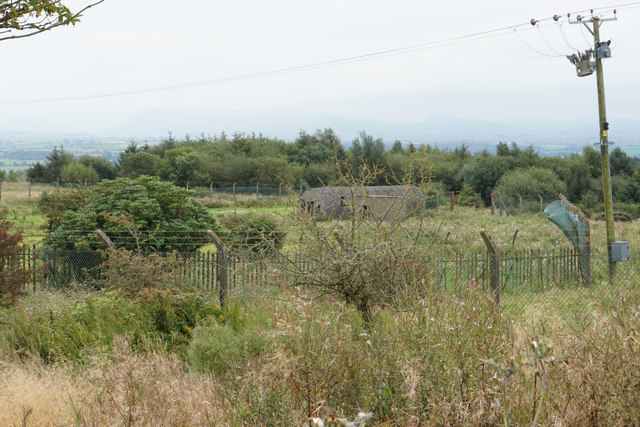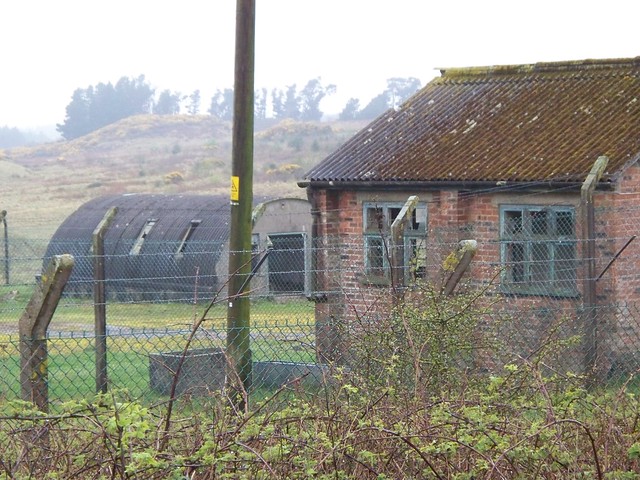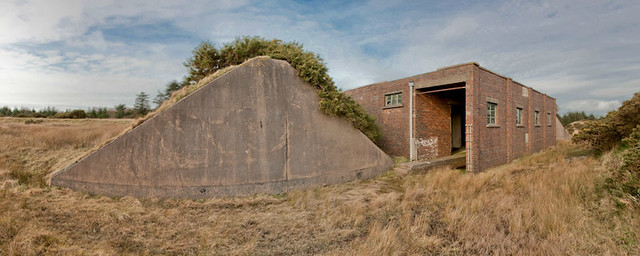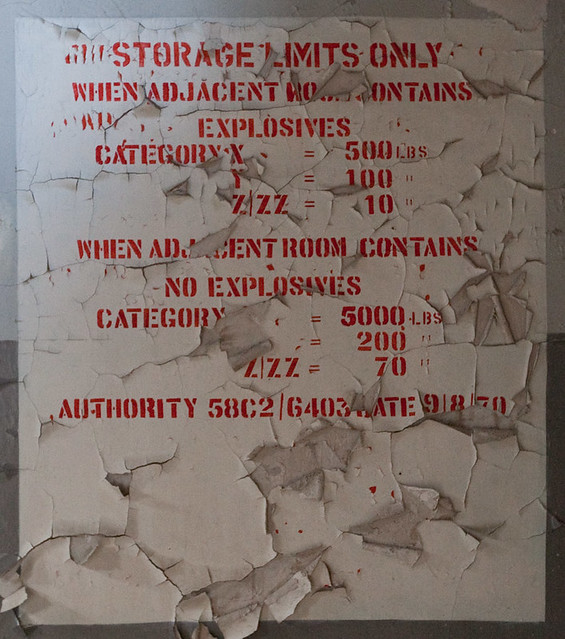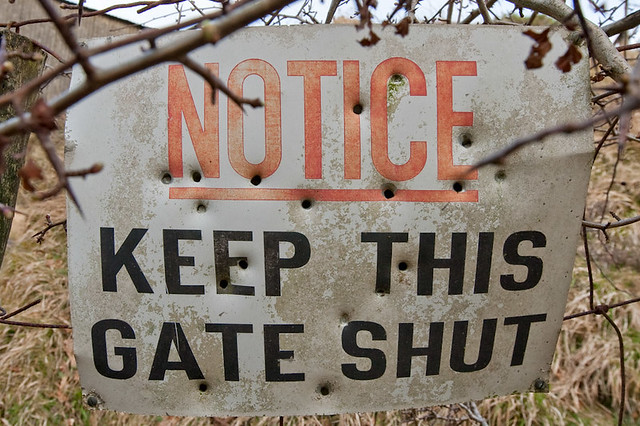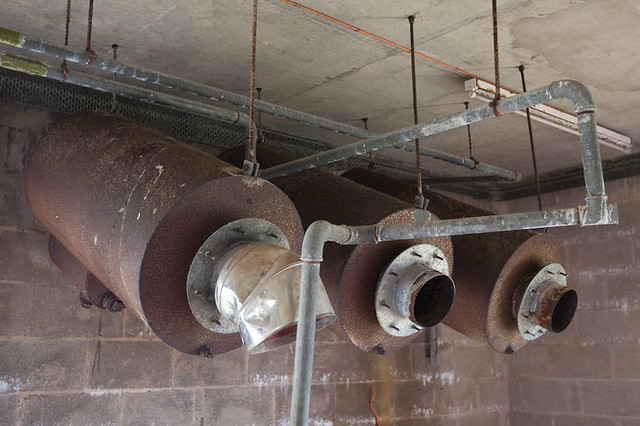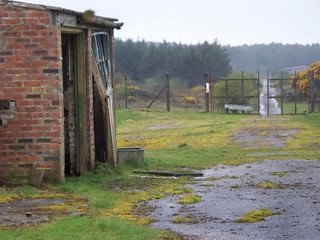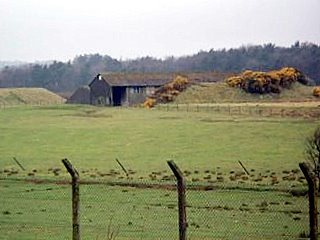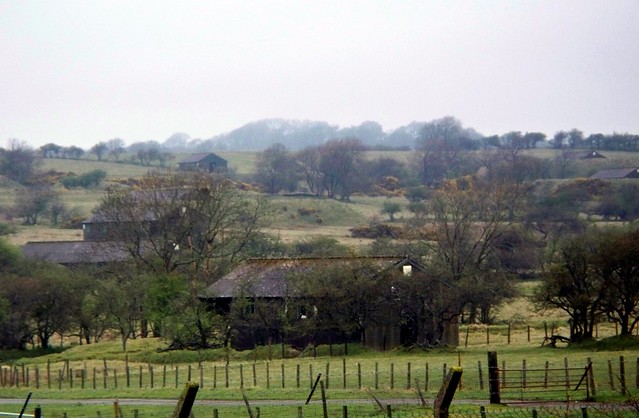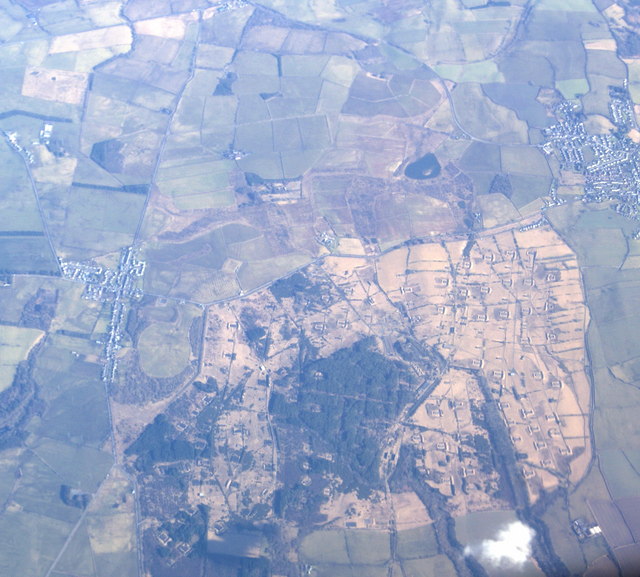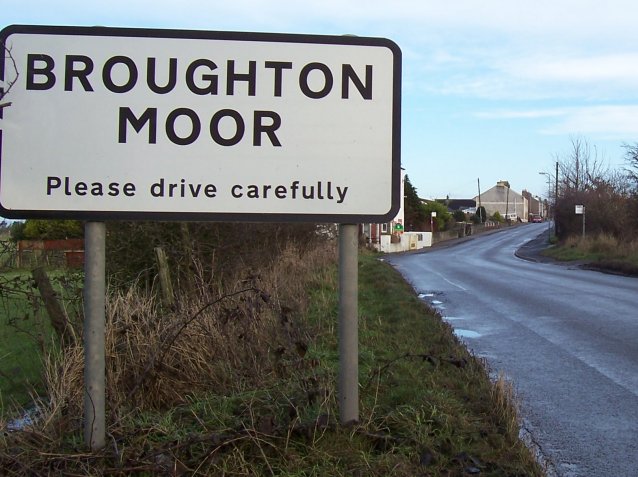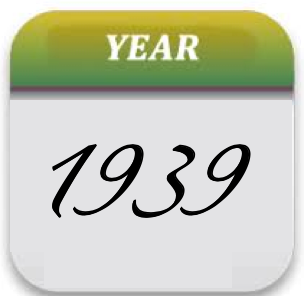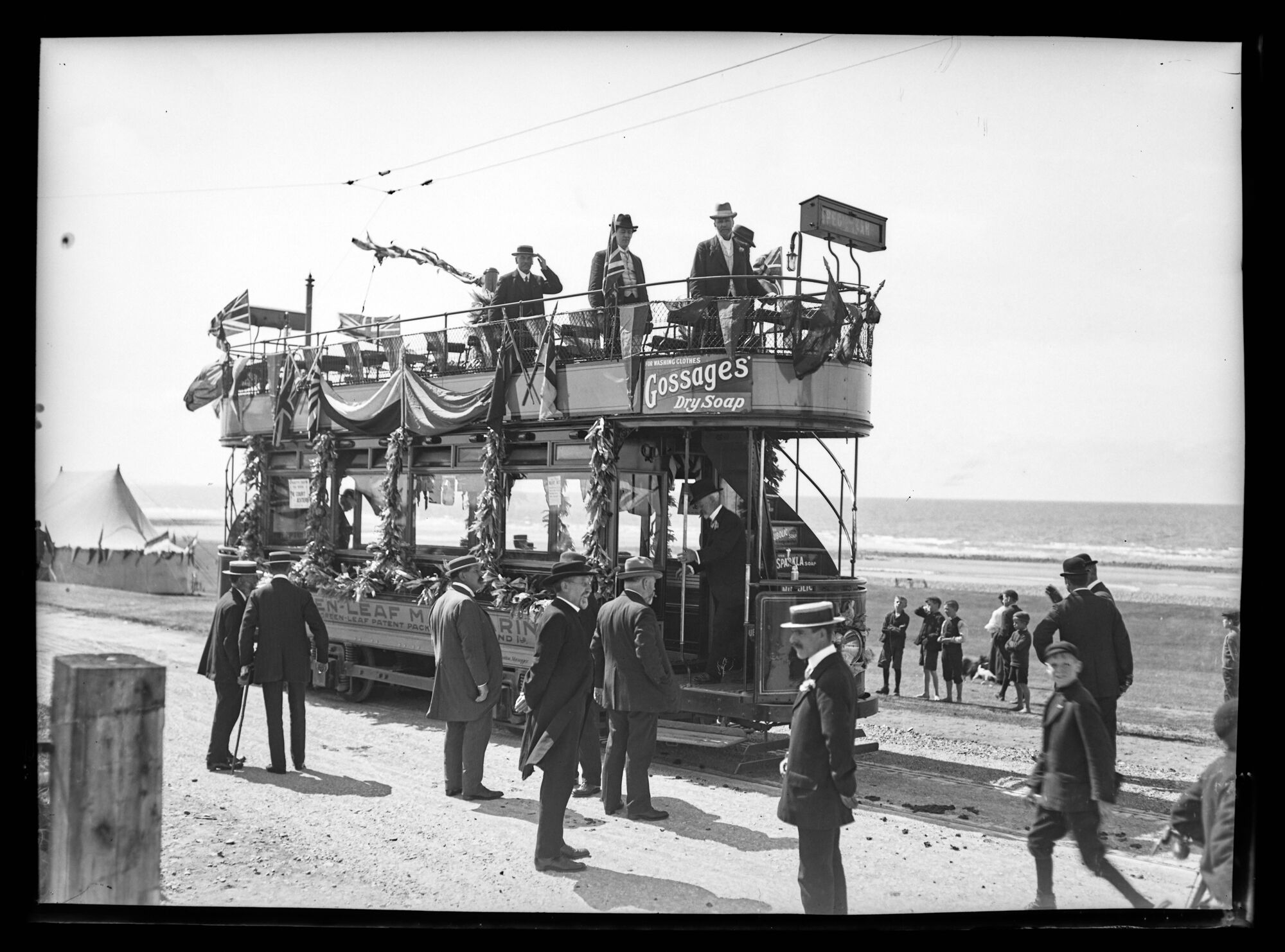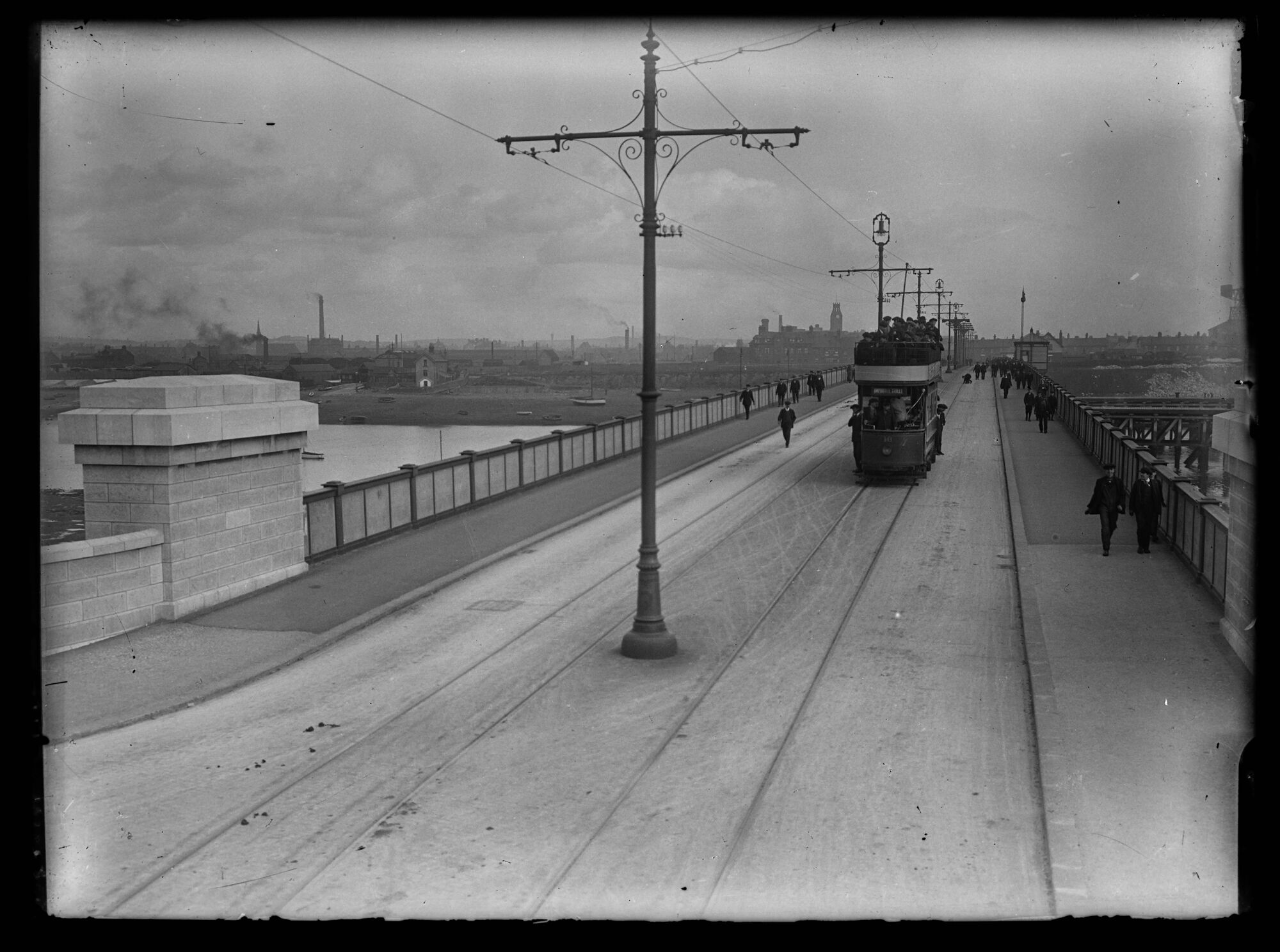Topics > Broughton Moor > RNAD Broughton Moor (1938 - 1992)
RNAD Broughton Moor (1938 - 1992)
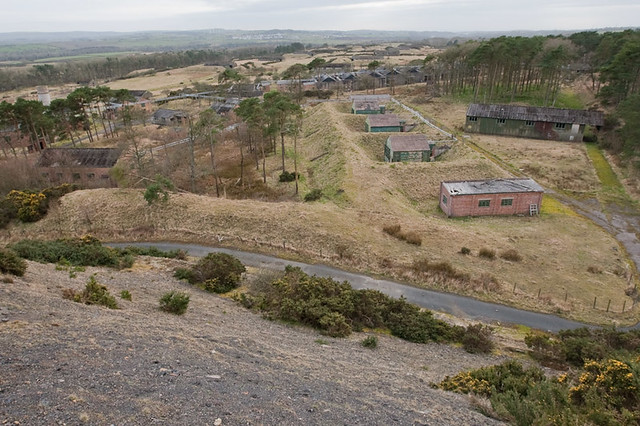 In 1939 a large Royal Naval Armaments Depot (RNAD) was built on the former site of Buckhill Colliery, located a short distance south of the village of Broughton Moor and to the north-east of Great Broughton, in the Allerdale district of Cumbria. The site played an important role in the Second World War, and following that, was still in use by the Ministry of Defence up to 1963. The depot had its own narrow gauge railway branch line which ran to Siddick Junction, north of Workington Railway Station. The depot was later used by the US Navy, and designated as a NATO facility from 1981, until the site was finally decommissioned at the end of 1992. The 1,050 acre site remained derelict and fenced off for almost 3 decades, because of potential dangers such as unexploded ordinance, asbestos and old mine shafts. Redeveloping the brownfield site has proved controversial; opencast mining and been proposed at one time, but there were later proposals by the Derwent Forest Development Consortium and partners, to decontaminate, clear, and used the site for a large-scale housing and tourism development. Initial work began in 2020.
In 1939 a large Royal Naval Armaments Depot (RNAD) was built on the former site of Buckhill Colliery, located a short distance south of the village of Broughton Moor and to the north-east of Great Broughton, in the Allerdale district of Cumbria. The site played an important role in the Second World War, and following that, was still in use by the Ministry of Defence up to 1963. The depot had its own narrow gauge railway branch line which ran to Siddick Junction, north of Workington Railway Station. The depot was later used by the US Navy, and designated as a NATO facility from 1981, until the site was finally decommissioned at the end of 1992. The 1,050 acre site remained derelict and fenced off for almost 3 decades, because of potential dangers such as unexploded ordinance, asbestos and old mine shafts. Redeveloping the brownfield site has proved controversial; opencast mining and been proposed at one time, but there were later proposals by the Derwent Forest Development Consortium and partners, to decontaminate, clear, and used the site for a large-scale housing and tourism development. Initial work began in 2020.
RNAD Broughton Moor is a decommissioned Royal Naval Armaments Depot located between Great Broughton and Broughton Moor in the County of Cumbria, England.
History
The depot was opened in 1939 on the site of Buckhill Colliery (opened 1873, closed 1932; the colliery's spoil heap remains a prominent feature of the site to this day). In 1944 the site was expanded from 800 to 1050 acres.
The depot continued to be used by the Ministry of Defence until 1963, at which point it was leased to the Federal Republic of Germany. From 1977 it was used by the United States Navy for storage of armaments for its North Atlantic Squadron (the weapons were flown out of the site by helicopters shuttling back and forth over a number of days to a USN Cargo Ship lying offshore and away from the town's harbour of Workington); and from 1981 Broughton Moor was formally adopted as a NATO storage site.
The site was decommissioned at the end of the Cold War, finally closing on 31 December 1992.
Railway
The site had a narrow gauge railway. Locomotives from this railway are preserved on the Almond Valley and Whipsnade railways. In 1970 the locomotives in use at Broughton Moor consisted of:
1 x Hunslet
1 x Ruston & Hornsby Class 165DS.
2 x Hunslet 25HP
4 x Hunslet 50HP
2 x Ruston & Hornsby Class 20DL, (Nos. R1/2)
6 x Ruston & Hornsby Class 48DL, (Nos. R4/6/7/8/10/12).
2 x Motor Rail
2 x Hunslet
The site was connected to the main line via a branch line to Siddick Junction, north of Workington railway station and utilised a headshunt at Northside to change direction northbound on to the Cumbrian Coast Line. The branch closed on 4 June 1992, being the last part of the Cleator and Workington Junction Railway in operation.
The railway equipment at RNAD Broughton Moor was sold by tender in April and July 1992 and consisted of approximately 3 miles of standard gauge track and 25 miles of narrow gauge (2 ft 6in) track. The sale also included 4 standard gauge locomotives built by Ruston & Hornsby and Hunslet, 27 narrow gauge locomotives by the same builders and 127 wagons, including 6 box vans, 4 brake vans (2 x 4tons & 2 x 6 tons) and 99 flat wagons.
Accidents
An explosion occurred at RNAD Broughton Moor on 18 January 1944 which resulted in the death of 11 people and left 70 people injured. The coroners hearing was reported in the Cumberland Evening Star in February 1944. The explosion appears to have occurred in one of the traverse laboratories, photos showing the aftermath include a gauge box van No. 267.
Present day
The large majority of the buildings and bunkers remain along with underground storage and an extensive network of storage sheds and other military buildings. Ownership of the site was transferred from the Ministry of Defence to Allerdale Borough Council in 2008 who have yet to decide what to do with the site. The site was purchased by the Borough Council for £1. In October 2008 Cumbria County Council called for interest in the redevelopment of the site rebranded as Derwent Forest. As yet there has been little interest due to the huge cost involved with cleaning up the site. There are unexploded ordnance and large amounts of asbestos as well as unmarked mine shafts when it was a colliery prior to World War II. Furthermore, having previously ruled out allowing the site to be used for coal mining, Allerdale council later agreed to allow mining by any prospective future owners as a way to raise funding for any potential tourism development.
It was announced on 13 January 2011 that the two shortlisted developers for the site would not mine the site, allaying fears about the environmental impact of the development of the site. A decision is due by the end of February 2011.
On 31st August 2018 the Derwent Forest Development Consortium and utropia revealed a masterplan to develop the site including 1200-2000 houses, a hotel, lodges, and other facilities. Work was due to begin in 2020.
Visit the page: RNAD Broughton Moor for references and further details. You can contribute to this article on Wikipedia.
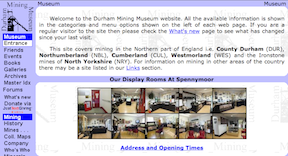
from http://www.dmm.org.uk/collier…
Buckhill Colliery
- "...Closed: 27 Nov 1932
Owners: ???? - Allerdale Coal Co. Ltd.
Output: 1888 - Coal.
1890 - Coal.
1896 - Coal: Coking, Gas, Household, Steam. Fireclay...."
Added by
Simon Cotterill

from https://www.timesandstar.co.u…
Opencast mining on Broughton Moor dump is only solution
- Times & Star, 17th September 2009. "EXPERTS claim that opencast coal mining is the only solution for the Broughton Moor site, a former senior member of Allerdale council’s Derwent Forest …
Added by
Simon Cotterill

from https://www.timesandstar.co.u…
Broughton Moor does not want opencast mining, parish council chairman
- Time & Star, 2nd October 2009. "THE VILLAGE of Broughton Moor has already suffered 40 years of opencast mining and does not need any more, says its parish council chairman. …
Added by
Simon Cotterill

from https://www.timesandstar.co.u…
Broughton Moor 1,050 acre development set to begin in 2020
- Times & Star, 30th August 2018. "Work on an ambitious scheme to transform the former armaments depot at Broughton Moor is due to begin in 2020.
A masterplan for the …
Added by
Edmund Anon

from https://www.in-cumbria.com/ne…
Work to transform Derwent Forest site underway
- In cumbria, 13th January 2020. "Work to regenerate the former Royal Naval Armaments Depot site at Broughton Moor has taken a step forward.
Reiver Homes, part of Story Contracting, has …
Added by
Edmund Anon


from http://www.dmm.org.uk/collier…
Buckhill Colliery
- "...Closed: 27 Nov 1932
Owners: ???? - Allerdale Coal Co. Ltd.
Output: 1888 - Coal.
1890 - Coal.
1896 - Coal: Coking, Gas, Household, Steam. Fireclay...."
Added by
Simon Cotterill

from https://www.timesandstar.co.u…
Opencast mining on Broughton Moor dump is only solution
- Times & Star, 17th September 2009. "EXPERTS claim that opencast coal mining is the only solution for the Broughton Moor site, a former senior member of Allerdale council’s Derwent Forest …
Added by
Simon Cotterill

from https://www.timesandstar.co.u…
Broughton Moor does not want opencast mining, parish council chairman
- Time & Star, 2nd October 2009. "THE VILLAGE of Broughton Moor has already suffered 40 years of opencast mining and does not need any more, says its parish council chairman. …
Added by
Simon Cotterill

from https://www.timesandstar.co.u…
Broughton Moor 1,050 acre development set to begin in 2020
- Times & Star, 30th August 2018. "Work on an ambitious scheme to transform the former armaments depot at Broughton Moor is due to begin in 2020.
A masterplan for the …
Added by
Edmund Anon

from https://www.in-cumbria.com/ne…
Work to transform Derwent Forest site underway
- In cumbria, 13th January 2020. "Work to regenerate the former Royal Naval Armaments Depot site at Broughton Moor has taken a step forward.
Reiver Homes, part of Story Contracting, has …
Added by
Edmund Anon
